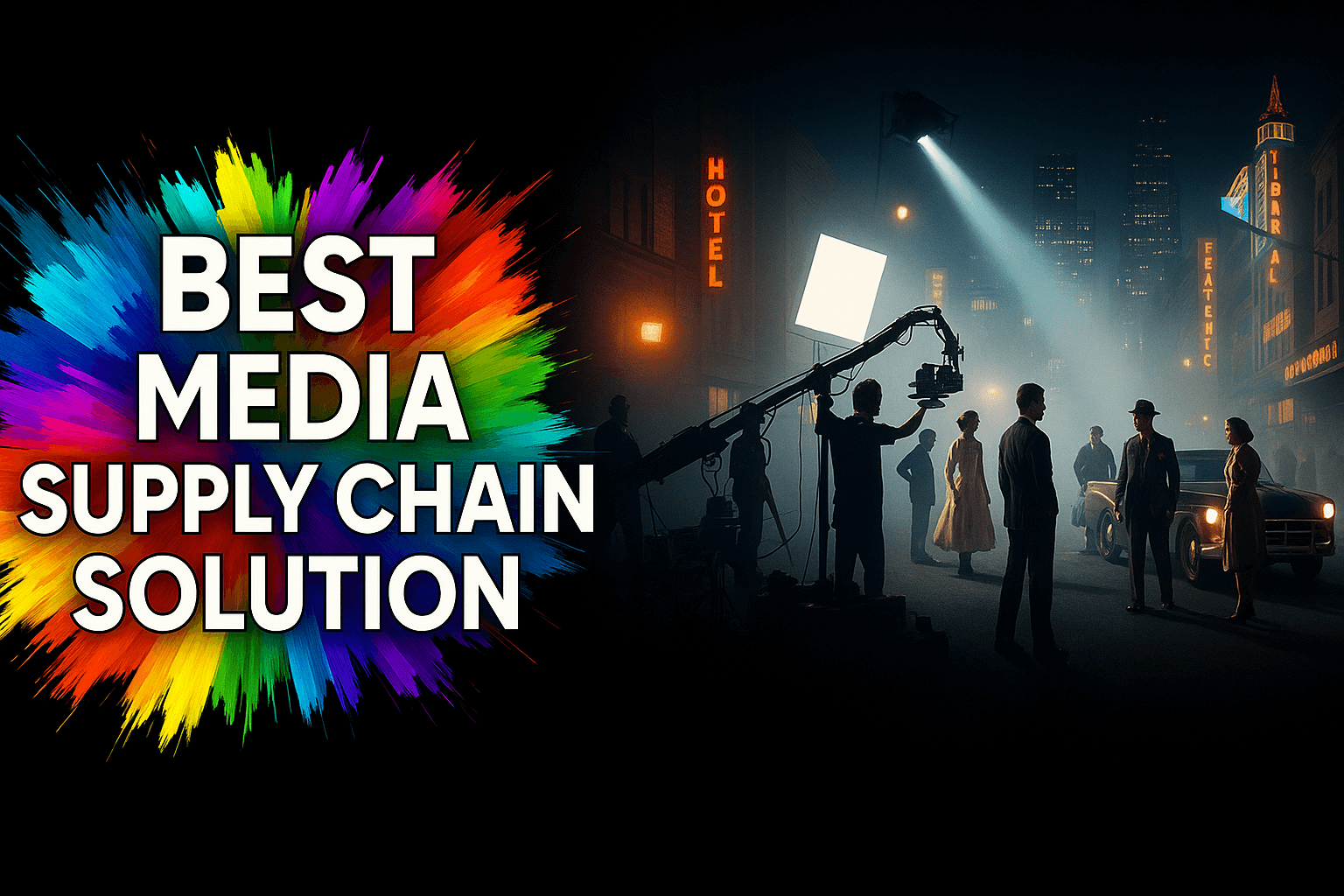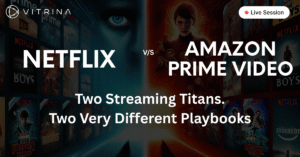The Complete Executive Guide to Choosing the Best Media Supply Chain Solution

Introduction
In the modern media and entertainment landscape, the journey of content from creation to consumption is no longer a simple, linear path. It is a complex, multi-stage process that involves a vast network of people, organizations, assets, and technology—collectively known as the media supply chain.
This chain, which includes everything from production and post-production to distribution and archiving, is the engine that powers the entire industry. For senior executives, the challenge is not just to understand this process, but to master it.
The ability to efficiently and effectively manage this chain is now a critical competitive differentiator. Relying on outdated or fragmented systems can lead to delays, increased costs, and missed market opportunities.
This article is a complete guide to choosing the best media supply chain solution, offering a strategic framework for evaluating the landscape and selecting a partner that aligns with your operational goals.
Key Takeaways
| Core Challenge | The media supply chain is a fragmented and complex ecosystem, making it difficult for executives to find and vet the right partners and technologies to optimize their workflows. |
| Strategic Solution | Adopt a data-driven approach to sourcing and vetting supply chain partners and solutions, focusing on verified expertise, interoperability, and end-to-end visibility. |
| Vitrina’s Role | Vitrina is a leading platform that provides real-time, verified intelligence on global film and TV projects, companies, and decision-makers to help executives navigate and master the entertainment supply chain. |
Understanding the Media Supply Chain Ecosystem
A media supply chain is a complete system that allows for the creation, management, and delivery of digital media. From content ingestion and metadata management to distribution and archiving, every step is a crucial component of the end-to-end process.
The traditional, linear model of content delivery has been disrupted by the rise of streaming services, direct-to-consumer models, and a proliferation of platforms.
This has transformed the media supply chain from a series of siloed steps into a highly dynamic, interconnected ecosystem. According to a 2025 report by Trax Technologies, the global digital supply chain market is projected to grow at a CAGR of 13.2% through 2032, driven by the adoption of AI, IoT, and blockchain.
This growth underscores the industry-wide shift toward more flexible, automated, and data-driven workflows.
The key components of this modern media supply chain include content ingestion and cataloging, which is the entry point for all media assets including raw video and audio; Media Asset Management (MAM), the system for organizing and retrieving media files;editing and post-production, the creative and technical processes of refining content; and distribution and packaging, which involves preparing and delivering content for various platforms.
Key Challenges in the Modern Supply Chain
Despite the industry’s growth and the availability of advanced technology, executives face significant hurdles when attempting to choose the best media supply chain solution. The core challenge is the lack of end-to-end visibility.
A fragmented landscape of specialized vendors, from post-production houses to distribution partners, means that a production executive or a studio head often has to manually piece together a complex network.
This leads to several critical pain points. There is a technological fragmentation where legacy systems often struggle to keep up with new innovations, leading to inefficiencies and compatibility issues. Data and metadata management is also a significant problem, as critical information about a project is often trapped in silos, making it difficult to track progress and make data-driven decisions. Lastly, inefficient partner discovery remains a major hurdle.
The manual process of finding and vetting the right partners—from a niche post-production studio to a specialized distribution vendor—is time-consuming and limits options.
A 2025 report from CHESA highlights that one of the top challenges is the “disrupted content pipeline,” which is directly linked to the inability to track and manage progress across a vast network of external partners. Without a complete view of the entertainment supply chain, it is nearly impossible to mitigate risk and maintain a competitive edge.
The Strategic Framework for Choosing a Solution
To overcome these challenges, a strategic approach is required. This framework moves beyond a simple feature checklist and focuses on the underlying business intelligence needed to make an informed decision.
The process begins with defining your needs and scope. Before evaluating any solution, clearly define your business requirements. For example, are you a small production company needing to streamline post-production, or a global streamer aiming to automate content delivery?
Your needs will dictate the type of solution you need. Next, conduct a data-driven sourcing initiative. Use an industry intelligence platform to identify potential partners and solutions. A strategic search should not be limited to a few well-known names.
A platform with verified data on a wide range of companies, from major studios to niche vendors, allows you to identify the best fit for your specific project’s genre, budget, and geographical requirements.
This is where you can truly find the best media supply chain partners, not just the most visible ones. The final step is to evaluate for interoperability and visibility.
The best solutions are not just standalone products; they are designed to integrate seamlessly with your existing workflow. A key question to ask is whether the solution provides a single source of truth for all project metadata.
The ability to track a project from development through to distribution on a single dashboard is a critical capability that reduces fragmentation and enhances decision-making.
How Vitrina Powers Your Sourcing Strategy
Vitrina is an intelligence platform designed to operationalize this strategic framework for media supply chain management. It provides the data and tools necessary to move from manual, guesswork-based sourcing to a proactive, data-driven strategy.
Vitrina’s core capabilities directly address the pain points of executives seeking to choose the best media supply chain. With a database of over 500,000 global projects and 160,000 companies, it offers unparalleled visibility into the entertainment supply chain.
You can search for production companies, post-production houses, or distribution partners based on their specific services, the genres they specialize in, and their recent projects.
This allows you to quickly generate a shortlist of potential partners who have a proven track record of success in your exact niche. Moreover, Vitrina provides the crucial business intelligence needed for due diligence. Its company profiles include verified information on key executives, past clients, and collaborators. This lets you assess a partner’s operational scale and market reputation before you even pick up the phone.
The platform also includes a directory of over 3 million executives, making it simple to find and connect with the specific person you need to reach, bypassing the traditional gatekeepers. Vitrina’s human-verified data ensures you are making a decision based on accurate, real-time intelligence, ensuring you are truly prepared to make the right choice for your business.
Conclusion: A Data-Driven Approach to Competitive Advantage
In a market where content is king, the media supply chain is the kingdom’s central nervous system. The ability to efficiently manage this complex ecosystem is no longer a matter of operational efficiency—it is a strategic imperative.
The task of choosing the best media supply chain solution requires a move beyond traditional methods of discovery and into a realm of data-driven intelligence.
By leveraging a platform like Vitrina, executives can gain a complete, verified view of the entertainment supply chain, empowering them to identify, vet, and connect with the right partners.
This strategic approach ensures not only a successful project outcome but also a stronger, more resilient competitive position in a rapidly evolving global market.
Frequently Asked Questions
A media supply chain is the network of people, organizations, assets, infrastructure, and processes involved in preparing content for distribution, from the moment of creation through to consumption.
A fragmented supply chain leads to a lack of end-to-end visibility, which can cause project delays, increased costs, and critical data being trapped in silos, making it difficult to track progress and make informed decisions.
To find a partner with specific expertise, you must use a data-driven approach. A professional intelligence platform allows you to search for companies by their specialization, past projects, and genre experience, providing a curated list of vetted partners.















































